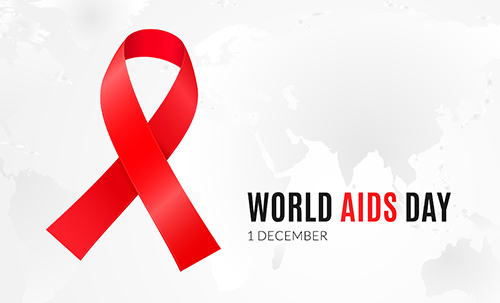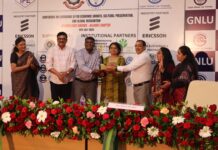World AIDS Day: 1st December each year since 1988, is International Day dedicated to raising awareness of HIV / AIDS caused by the spread of HIV / AIDS and mourning for those who have died of the disease. Acquired immunodeficiency syndrome World AIDS Day: 1st December (AIDS) is a life-threatening condition caused by the human immunodeficiency virus (HIV). The HIV virus attacks a patient’s immune system and reduces its resistance to other infections. Government and health workers, non-governmental organizations, and people around the world celebrate this day, often being educated on AIDS prevention and control.

Important Announcement – EasyShiksha has now started Online Internship Program “Ab India Sikhega Ghar Se”

Q. Are EasyShiksha's internships truly free?
Yes, all internships offered by EasyShiksha are completely free of charge.
Q. How can I apply for an internship with EasyShiksha?
You can apply by visiting our website, browsing available internships, and following the application instructions provided.
Q. What types of internships are available through EasyShiksha?
EasyShiksha offers a wide range of internships across technology, business, marketing, healthcare, and more. Opportunities are continuously updated.
Q. Will I receive a certificate upon completing an internship?
Yes, upon successful completion, you will receive a certificate recognizing your participation and achievements.
Q. Are EasyShiksha's internship certificates recognized by universities and employers?
Yes, the certificates are recognized by universities, colleges, and employers worldwide.
Q. Is the download of certificates free or paid?
Access to internships and courses is free, but there is a small fee to download certificates, covering administrative costs.
Q. When can I start the course?
You can choose any course and start immediately without delay.
Q. What are the course and session timings?
These are fully online courses. You can learn at any time and pace. We recommend following a routine, but it depends on your schedule.
Q. What will happen when my course is over?
After completion, you will have lifetime access to the course for future reference.
Q. Can I download the notes and study material?
Yes, you can access and download course materials and have lifetime access for future reference.
Q. What software/tools would be needed for the course?
All necessary software/tools will be shared during the training as needed.
Q. I’m unable to make a payment. What should I do?
Try using a different card or account. If the problem persists, email us at info@easyshiksha.com.
Q. Do I get the certificate in hard copy?
No, only a soft copy is provided, which can be downloaded and printed if required.
Q. The payment got deducted but shows “failed”. What to do?
Technical errors may cause this. The deducted amount will be returned to your account in 7-10 working days.
Q. Payment was successful but dashboard shows ‘Buy Now’?
Sometimes payment reflection is delayed. If it takes longer than 30 minutes, email info@easyshiksha.com with the payment screenshot.
Q. What is the refund policy?
If you face technical issues, you can request a refund. No refunds are issued once the certificate has been generated.
Q. Can I enroll in a single course?
Yes, select the course of interest, fill in the details, make payment, and start learning. You will also earn a certificate.
Q. My questions are not listed above. I need further help.
Contact us at info@easyshiksha.com for further assistance.
This day is one of eighteen official public health campaigns marked by the World Health Organization (WHO), as well as World Health Day, World Blood Donation Day, World Immunization Week, World TB Day, World No Tobacco Day, World Malaria Day , World Hepatitis Day, World Antimicrobial Awareness Week, World Patient Safety Day and World Chagas Disease Day.
Since 2017, AIDS has killed between 28.9 million and 41.5 million people worldwide, with an estimated 36.7 million people living with HIV, making it one of the most important public health problems in the world in recorded history. With the recent availability of antiretroviral drugs (ARVs) in many parts of the world, the death toll from the AIDS epidemic has dropped dramatically since 2005.
Top Courses in Software Engineering
History
World AIDS Day was started in August 1987 by James W. Bunn and Thomas Netter, two public information officers of the Global Program on AIDS at the World Health Organization in Geneva, Switzerland. Bunn and Netter took their idea to Drs. Jonathan Mann, Director of the Global Program on AIDS (now known as UNAIDS). Mann liked the idea, embraced it, and agreed with the recommendation that the first World AIDS Day should be celebrated on December 1, 1988. Bunn, a former San Francisco television journalist, praised December 1 for believing in increasing the spread of this Day through the media of the western media, long enough to follow the US election but before the Christmas holidays.
In its first two years, the theme for World AIDS Day focused on children and young people. While the choice of the theme was criticized by some at the time for ignoring the fact that people of all ages could be infected with HIV, the theme helped to reduce some of the stigma surrounding the disease and increase the perception of the problem as a family disease.
Each year, Popes John Paul II and Benedict XVI issued a greeting message to patients and doctors on World AIDS Day.
In the US, the White House began celebrating World AIDS Day with a display of the 8.5 m (8.5 m) AIDS Ribbon in North Portico of the building in 2007. White House Aide Steven M. Levine, former President George W. Bush’s administration, proposed the exhibition to demonstrate the United States’ commitment to fighting the global AIDS epidemic through its historic PEPFAR program. The White House exhibition, now an annual tradition in the administration of the four Presidents, quickly gained attention, as it was the banner, sign or symbol of a prominent hanging in the White House since the administration of Abraham Lincoln.
Since 1993, the President of the United States has made the official announcement of World AIDS Day (see section # US Presidential Announcements for World AIDS Day for copies of those declarations). On November 30, 2017, President Donald Trump declared World AIDS Day on December 1.
Explore more about this course from EasyShiksha
ALSO READ: national-law-day-26th-november
Get Course: Android-Apps-Development







































































